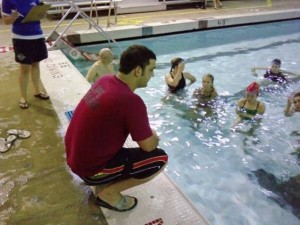Drowning is defined as respiratory impairment following submersion or immersion in fluid media – almost all include drowning in water.
Cause of drowning may be either intentional or accidental and it is one of the commonest causes of injurious deaths in developing countries. Drowning is common among males in comparison to females, as well as among younger age groups compared to elderly.
More than half of drowning cases take place in rivers, lakes and swimming pools than sea. It is to be noted that a deep place is not a necessity when comes to drowning, this happens specially when other factors like alcohol intoxication is operational; you can drown in your own bathtub.
Mechanism of death in drowning victim:
- Immersion deaths (sometimes can die in water by aspiration of water only up to the level of the larynx, here the amount of water entering to deep lung tissue is no or minimal. This is called as dry drowning. The mechanism could be laryngeal spasm, vagal inhibition or hypothermia.)
- Drowning deaths (these are due to aspiration of fluid beyond the larynx up to the distal part of the lung tissue. The mechanism could be mechanically induced cerebral hypoxia due to respiratory tract obstruction by the fluid. This is called wet drowning.)
- Natural illness before or after entering to water (can fall in to water following myocardial infarction/heart attack or due to struggle in water to survive can precipitate pre-existing myocardial infarction.)
- Injuries received before or after entering to water. (e.g. thrown into a body of water following motor vehicle accident)
- In a near-drowning case damage to the delicate lung tissue caused by water, sand, mud etc. can later cause collapse of alveoli leading to adult respiratory distress syndrome (ARDS) which can be fatal.
- Animal predation ( although not true drowning; crocodiles, sharks can cause serious injuries)
Pathophysiology of drowning:
- Wet-drowning: – lungs are not adapted to extract oxygen from water/fluids. Therefore when water enter into the airways it cause mechanical obstruction of airways leading to absent O2 transfer to blood, causing hypoxia and death.
- Dry-drowning: – when water suddenly hits larynx it can go into spasm totally obstructing the airway leading to hypoxia without any water entering lung. In some sensitive individuals sudden gush of water (cold) onto larynx can lead to extreme vagal nerve discharge causing the heart to stop suddenly.
First aid Management:
- Ensure safety of yourself and others.
- Remove the patient safely from the water. Do not attempt swimming rescue if you are not competent in swimming rescues.
- Call for life guards and emergency services.
- Check the patency of airway, turn patient to lateral side allowing the water to clear out from the upper airway. Remove any mud, dentures etc.
- Check for breathing by feeling respiratory air, looking for the chest movement and listing for breath sounds. In the same time check for pulse also.
- If the victim is conscious coughing and vomiting water keep him on lateral position to prevent further aspiration and reassure the victim.
- If unconscious and not breathing, open up the airway by head tilt and chin lift maneuvers and start rescue breathing.
- Close and seal the victim’s nostrils by your fingers, take a good breath, place your mouth on victims mouth and blow as hard as possible
- Repeat this method every five to six seconds.
- If you are not comfortable with direct mouth to mouth bleeding use a handkerchief. But this method is not efficient as direct mouth to mouth blowing.
- If the person regains consciousness and starts breathing, turn him to lateral side and keep monitoring.
- If the pulse is also absent initially start CPR instead.
- Remove wet clothing and cover with dry warm cloth to prevent hypothermia.
- Attend to other injuries if present (e.g. bleeding following animal bites).
Following a near-drowning incident, admit the patient to the hospital even he looks completely well. Victim may develop difficulty in breathing sometime after due to ARDS.

